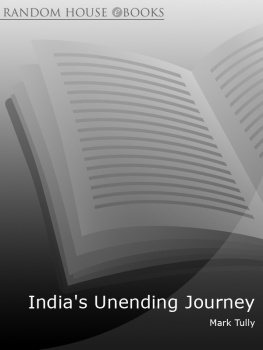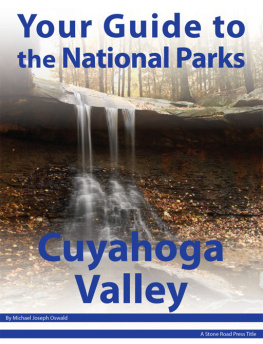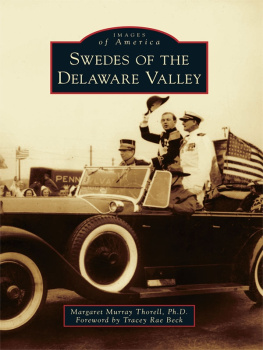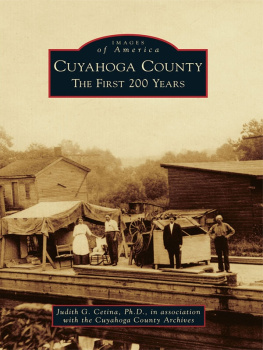Crooked Deals and Broken Treaties
CROOKED DEALS
AND BROKEN TREATIES
How American Indians Were Displaced by
White Settlers in the Cuyahoga Valley
by JOHN TULLY

Copyright 2016 by John Tully
All Rights Reserved
Library of Congress Cataloging-in-Publication Data
Tully, John A. (John Andrew), author.
Crooked deals and broken treaties : how American Indians were displaced by
White settlers in the Cuyahoga Valley / by John Tully.
pages cm
Includes bibliographical references and index.
ISBN 978-1-58367-566-3 (alk. paper) ISBN 978-1-58367-567-0 (alk. paper)
1. Indians of North AmericaOhioCuyahoga River ValleyHistory18th
century. 2. Indians of North AmericaOhioCuyahoga River ValleyHistory19th century. 3. Cuyahoga River Valley (Ohio)History18th century. 4. Cuyahoga River Valley (Ohio)History19th century. 5. Frontier and pioneer lifeOhioCuyahoga River Valley. I. Title.
E78.O3T85 2015
977.131dc23
2015035431
Typeset in Minion Pro 11/14
Monthly Review Press
146 West 29th Street, Suite 6W
New York, New York 10001
monthlyreview.org
5 4 3 2 1
Contents
There has never been a document of culture
which is not simultaneously one of barbarism.
Walter Benjamin
For the dispossessed American Indians
of the Cuyahoga Valley region
Acknowldgements
While I bear full responsibility for this book, many people helped with the research, writing, and publication, and they deserve my sincere thanks. Mike Yates, Martin Paddio, and Scott Borchert at Monthly Review Press had faith in this book, my third with them, and for this I am grateful. Special mention must be made of Erika Biddle of Toronto, who copy-edited the original draft of the book. While I did not accept all of her recommendations, her meticulous reading, judicious suggestions, and corrections of errors and omissionssome most egregious!greatly enhanced the quality of the text. Thanks are also due to my former employer, Victoria University in Melbourne, which kindly allowed me the time to travel to the U.S. on full pay in order to carry out research for the book. Mention must be made of the staff of a number of libraries and archives in northeast Ohio, including the Beacon Journal library, the Akron-Summit County Public Library, the Western Reserve Historical Society Library and Archives in Cleveland, the Kent State University Library, Bowling Green State University Library Special Collections, and the library and archives of the University of Akron. None of this should be taken to imply that any of these people necessarily agree with my interpretation of historical events. During my visits to Akron and the surrounding districts I came into contact with numerous local residents. Many of them went out of their way to make my time in their city pleasant and productive. Thanks, for instance, to the friendly and courteous man on the front desk at the Beacon Journal offices, and also to Andrea, who served me meals and drinks at the Winking Lizard in Macedonia, and took the time to chat to a foreigner on a number of snowy winter nights. I should also thank the staff of the University of Akron student cafeteria for generously providing me with a diners card, which enabled me to eat healthy food at affordable prices. Finally, I should not forget to thank my family in Melbourne, Australia, for putting up with my protracted absences on research trips for the book, and for their general encouragement for the project.
A Note on Terminology
What collective name should we use to describe the first owners of the land that is now the United States? It might not seem to matter, but the question has sparked fierce debate. Should it be Native Americans, or American Indians, or even just Indians? A respectful approach dictates that it should be up to those concerned; but there is no unanimity among what is, after all, a great multiplicity of peoples. A 1995 U.S. Department of Labor survey found that fifty percent of those identifying as indigenous preferred the term American Indian, while thirty-seven percent favored Native American. Thirteen per cent did not express a preference, perhaps identifying as First Nations peoples, indigenous peoples, or aboriginal peoples. Some, perhaps, didnt think it mattered. The National Congress of American Indians uses the term Indians frequently, but others argue that Indian is a label coined by the white colonizers and based on Columbuss mistaken belief that he had landed in Asia and not the Caribbean.
Where appropriate, I have used the names of particular American Indian nations, but this, too, can present problems. The name Delaware, for instance, is still in common use today, but it is derived from the family name of the de la Warrs, who were aristocratic English landholders in colonial America. The people called themselves the Lenni Lenape, which simply means The People. Some Lenape still use the name Delaware and that is their choice. In the end, it is not for me as a European and a foreigner to rule on these terminological issues, which are also political matters. Accordingly, I will use both American Indian and Native American, and occasionally Indian or indigenous people. I do so with respect at all times.
Preface
VISITORS TO AKRON MAY BE CURIOUS about the life-sized, metal-clad, concrete statue of an Indian Brave in Highland Park Square, on the corner of West Market Street and Portage Path. Known locally as Unk, it was unveiled on July 4, 1905, to memorialize the route along which American Indians carried their canoes between the St. Lawrence and Mississippi basins. (From hereon, we will primarily alternate between American Indians and Native Americans and only sparingly Indians.) Until 1789, the Portage Path or Indian Trail marked the westernmost boundary of the United States. Three further monuments, fashioned by the Onondaga-Seneca artist Peter Jones, were erected on the Portage Path in 2003. G. F. Kaschs Unk and Joness flint arrowhead sculptures are the citys only monuments to the indigenous peoples of the Cuyahoga Valley. Less respectfully, there is a chicken restaurant named after the warrior Hopocan in Barberton on Akrons fringe.
This book examines the early years of the European settlement of Akron in the Cuyahoga Valley region and the adverse impacts on its Native American inhabitants, with some discussion of what colonization meant for the local ecology. While the book acknowledges the struggles of the Europeans to settle on the American And this, I learned, was the case in Akron.
Founded in 1825 and situated in the northeast region of Ohio near the Cuyahoga River, Akron has been called the All-American City. It is the seat of Summit County, which was formed on March 3, 1840, from portions of Medina, Portage, and Stark Counties. It was named Summit County because it contains the highest elevation of the Ohio and Erie Canal. It lies some 35 miles south of the city of Cleveland and Lake Erie. The Cuyahogathe Crooked Riverrises in a forested upland region between the two cities. Akron is one of the cradles of the Industrial Revolution that transformed America. Once known as the Rubber Capital of the World, Akron has been recognized as a world leader in polymer research and engineering. It is a city of great invention and boasts many illustrious sons and daughters in the sciences, arts, industry, and public life. And yet it has a dark history that few people seem comfortable talking about. One cannot contemplate Unk without thinking about the violent origins of present-day civilization in the Cuyahoga Valley region. Many justify what happened as the price of progress. However, the descendants of those expelled from the Cuyahoga Valley some two hundred years ago still suffer the consequences of this progress. While we cannot undo the past, we can take steps to remedy historical wrongs.
Next page





![Deloria Jr. - Behind the trail of broken treaties an Indian declaration of independence. [The goundbreaking work by the preeminent spokesperson for American Indian rights]](/uploads/posts/book/171989/thumbs/deloria-jr-behind-the-trail-of-broken-treaties.jpg)

